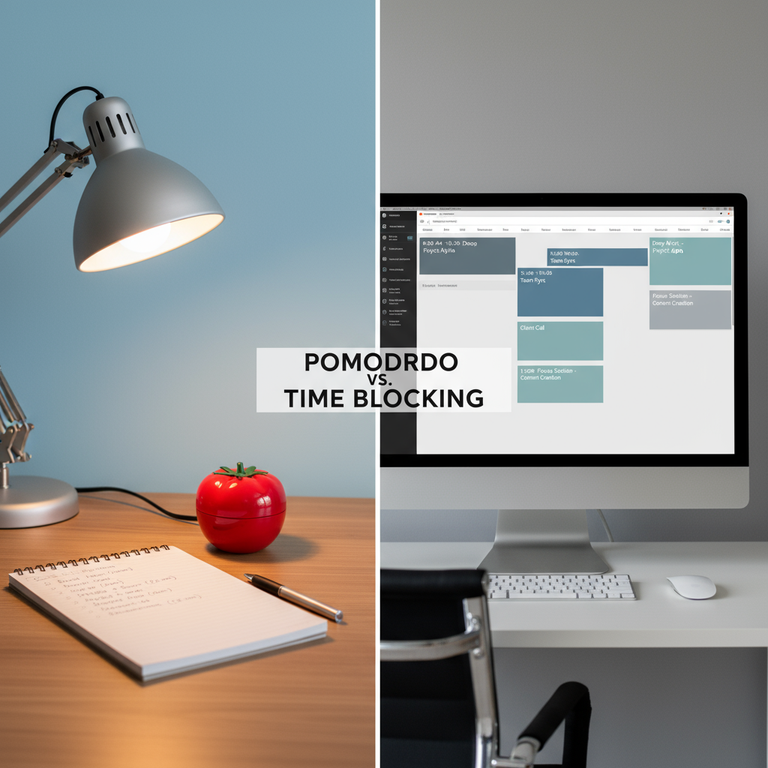The GTD (Getting Things Done) Method: The Absolutely Complete Guide to Implementing from Scratch
We are living in an epidemic of overwhelm. Your brain is overflowing with projects, ideas, deadlines, grocery lists, emails to answer, and that nagging feeling you’re forgetting something critical. Most people use their brain as a disorganized, high-stress “to-do” list. The problem is, your brain is a terrible office manager. It’s designed for having ideas, not for holding them.
This is the core problem that the GTD (Getting Things Done) Method solves. Created by productivity consultant David Allen, GTD is not just another time management hack; it’s a comprehensive, bottom-up system for managing your life’s “stuff.” It provides a trusted external system to capture and organize 100% of your commitments, freeing your mind to do what it does best: be creative, strategic, and present.
This is your complete guide to implementing the GTD (Getting Things Done) Method from scratch. We will walk through the core philosophy and the five essential steps to move you from a state of anxious chaos to one of effortless control—what Allen calls a “mind like water.”
The Core Philosophy: Why the ‘GTD’ Method Works
The entire GTD (Getting Things Done) Method is built on a simple premise: your mind is negatively impacted by “open loops.” An “open loop” is any commitment you’ve made (to yourself or others) that you haven’t yet completed or captured in a trusted system. Every time you think, “I need to…” or “I shouldn’t forget…” you are creating an open loop that drains your cognitive energy.
These open loops, no matter how small, create psychic background noise. They are the source of that low-grade anxiety that follows you through your day. You can’t be fully present in a meeting because your brain is reminding you to buy milk. You can’t relax at night because you’re trying not to forget a brilliant idea for a project.
The GTD (Getting Things Done) Method works by getting every single one of these commitments—every idea, task, and project—out of your head and into an external, trusted system. Once your brain trusts that *everything* is captured and will be reviewed at the right time, it finally lets go. This is when you achieve “mind like water,” a state where you can respond to your world with appropriate, focused energy instead of reactive panic.
The 5 Steps to Implementing the GTD (Getting Things Done) Method
The GTD framework is a habit, not a software. It consists of five essential steps. We will cover each one in detail.
Step 1: CAPTURE (Get Everything Out of Your Head)
This is the first and most critical step. You must collect 100% of the “stuff” that has your attention. Your goal is to create a handful of “inboxes”—trusted collection points that you will process regularly. Your mind’s only job is to dump things into these inboxes, not to organize them.
Your inboxes might include:
- A physical “In” tray on your desk
- A primary email inbox
- A digital notes app (like Todoist, Things, Notion, or even a simple text file)
- A physical notebook you carry with you
- Your voicemail
The rule is absolute: if it crosses your mind, capture it immediately in one of your inboxes. No idea is too big or too small. “Buy milk,” “Plan Q3 marketing strategy,” and “Look up that book” all go in. You are not deciding what to do yet; you are just collecting.
Step 2: CLARIFY (Process What You Captured)
This is where you “process” your inboxes. You go through each item you captured and ask a specific set of questions. The goal is to get your inboxes to “zero” every day or two. For each item, you must ask: “Is this actionable?”
If the answer is NO:
- It’s Trash: You don’t need it. Delete it. Throw it away.
- It’s Someday/Maybe: It’s an idea you might want to act on later, but not now (e.g., “Learn Spanish,” “Visit Japan”). It goes on a “Someday/Maybe” list.
- It’s Reference: It’s information you need to keep but don’t need to act on (e.g., a receipt, a project brief, a useful article). File it in a trusted reference system.
If the answer is YES, it is actionable:
You must decide two things:
- What is the “Next Action”? What is the *very next physical, visible action* you need to take? “Plan party” is not a next action; it’s a project. The next action is “Email Sarah and John to find a date.”
- The 2-Minute Rule: This is a key part of the GTD (Getting Things Done) Method. If that Next Action will take two minutes or less, do it immediately. This clears out small tasks (like “Reply to email ‘Thanks'”) before they ever clog your system.
If the action takes more than two minutes, you must either Delegate It or Defer It.
Step 3: ORGANIZE (Put It Where It Belongs)
Once you’ve clarified an actionable item, you must organize it. This is where your system of lists comes in. This is the “external brain” you’re building.
- Projects List: If the item requires *more than one action step* to complete (e.g., “Plan party,” “Launch new website”), it’s a “Project.” You add it to a “Projects List.” This list is just a master inventory of your open loops; you do *not* work directly from this list.
- Calendar: The calendar is “sacred ground” in the GTD (Getting Things Done) Method. It is ONLY for things that must happen at a specific time (an appointment) or on a specific day (a report that is due). Do NOT use it for a “to-do” list.
- Next Actions Lists (Contexts): This is the secret sauce. This is where you put your deferred “Next Actions.” You organize them not by project, but by the *context* you need to be in to do them. Common context lists include:
- @Computer (for tasks you can only do at your computer)
- @Calls (for phone calls you need to make)
- @Errands (for things you need to do when you’re out)
- @Home (for household tasks)
- @Agenda (for topics to bring up with specific people, e.g., “@Boss,” “@Spouse”)
- Waiting For List: If you delegated an action (“Email Bob…”), you log it on a “Waiting For” list. This allows you to track delegated items without them clogging your mind.
Step 4: REFLECT (Review Your System Regularly)
Your GTD (Getting Things Done) Method system is only as good as your trust in it. If it’s out of date, your brain will stop trusting it and go back to holding “open loops.” The “Review” step is what builds and maintains that trust.
The Weekly Review: This is the non-negotiable cornerstone of GTD. Once a week (e.g., Friday afternoon), you must sit down and review your entire system. This includes:
- Getting all inboxes (physical and digital) to zero.
- Reviewing your “Next Actions” lists.
- Reviewing your “Projects List” to ensure every project has at least one “Next Action” defined.
- Reviewing your “Waiting For” list and nudging people if necessary.
- Reviewing your “Someday/Maybe” list for any items to activate.
- Reviewing your Calendar (past and future).
This weekly “reset” gives you a 10,000-foot view of your life and ensures nothing is falling through the cracks. This is what makes the GTD (Getting Things Done) Method truly sustainable.
Step 5: ENGAGE (Do the Right Thing)
This is the “doing” part. With your trusted system in place, you can now make intelligent choices about what to do at any given moment. You no longer have to rely on your (faulty) memory.
When you have a block of time, you simply look at your “Next Actions” lists and ask:
- What is my context? (I’m at my computer with 30 minutes before a call.)
- What is my energy level? (I’m low-energy, so I’ll do admin tasks, not deep strategic work.)
- What is my priority? (This report is the most important thing on my @Computer list.)
The GTD (Getting Things Done) Method gives you the confidence that whatever you are working on is exactly what you *should* be working on, because you’ve already captured and clarified everything else.
Conclusion: The True Goal of ‘Getting Things Done’
The GTD (Getting Things Done) Method is often mistaken for a system to become a “productivity robot.” This is incorrect. The true goal of GTD is not to do more things, but to be more present with the thing you are doing. It’s about creating the mental bandwidth to be creative, strategic, and spontaneous.
By implementing this five-step system from scratch, you are building an external brain. You are offloading the stressful, administrative work of “remembering” so your mind can be free to do the high-value work of “thinking.” That is the real power of “mind like water,” and it’s a skill you can start building today.







